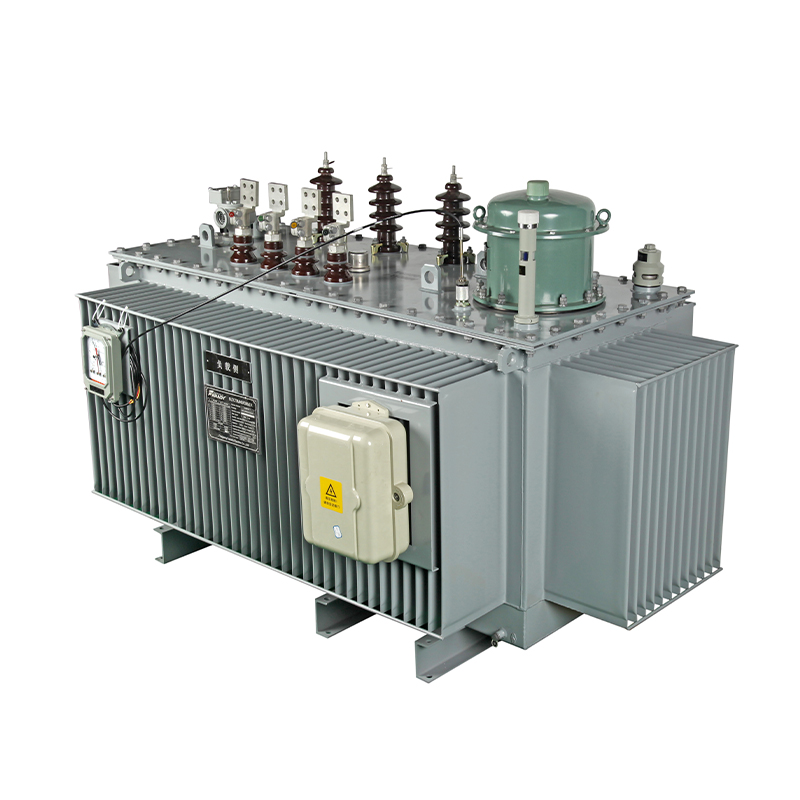The Future of Step Voltage Regulators in Smart Grids
Slow Response Times: Mechanical tap changers in traditional SVRs require 1–5 seconds to complete a tap change, which is insufficient for rapid voltage fluctuations caused by renewable energy sources or sudden load changes.
Limited Sensing: They lack visibility into broader grid conditions, such as voltage profiles across the feeder or the impact of their adjustments on downstream devices.
Inability to Coordinate: Traditional SVRs operate independently, leading to potential overcompensation or conflicting adjustments when multiple regulators are installed on the same feeder.
Dependence on Manual Maintenance: Regular inspections and adjustments are required to address wear on mechanical components, increasing operational costs.
DER Integration: Solar panels, wind turbines, and battery storage systems create bidirectional power flows, causing voltage rises (e.g., during midday solar generation) that traditional SVRs cannot mitigate effectively.
Electrification Trends: The growth of electric vehicles (EVs), heat pumps, and smart appliances increases load variability, requiring faster and more precise voltage adjustments.
Grid Resilience: Smart grids require self-healing capabilities, where SVRs must coordinate with other devices (e.g., reclosers, DERs) to isolate faults and restore power quickly.
Data-Driven Optimization: Utilities increasingly rely on real-time data to optimize grid performance, necessitating SVRs that can communicate, share data, and adapt to dynamic conditions.
Advanced Sensing: Embedded sensors will monitor not only voltage and current but also temperature, vibration, and tap changer position. These sensors will provide granular data on SVR performance and health.
Real-Time Communication: Integration with communication protocols like IEC 61850 and DNP3 will allow SVRs to transmit data to grid management systems and receive control signals. This enables centralized monitoring and coordinated regulation.
Edge Computing: Onboard processing capabilities will allow SVRs to analyze data locally, making rapid decisions without relying on distant servers. For example, an SVR could detect a voltage spike from a nearby EV charger and adjust taps in milliseconds, then report the event to the central system.
Silicon Carbide (SiC) and Gallium Nitride (GaN) Components: These wide-bandgap semiconductors enable faster switching, reducing tap change times to microseconds. This allows SVRs to respond to rapid voltage fluctuations from DERs.
Hybrid Designs: Some SVRs will combine mechanical and solid-state tap changers, using solid-state devices for fine adjustments and mechanical changers for larger voltage shifts. This balances speed with durability.
Reduced Maintenance: Solid-state components have fewer moving parts, lowering wear and extending maintenance intervals. Utilities could see a 50% reduction in maintenance costs over traditional SVRs.
Predictive Voltage Regulation: ML algorithms will analyze historical load data, weather patterns, and DER output to predict voltage fluctuations. SVRs can then adjust taps proactively—for example, increasing voltage in anticipation of evening EV charging peaks.
Anomaly Detection: AI models will identify unusual behavior (e.g., unexpected voltage drops, abnormal tap changer movement) that may indicate faults or tampering. This enables early intervention and prevents failures.
Adaptive Control: SVRs will learn from their environment, adjusting their response parameters over time. For instance, an SVR in a neighborhood with growing solar adoption will adapt to manage voltage rises more effectively.
Plug-and-Play Components: Sensors, communication modules, and tap changers can be added or upgraded without replacing the entire unit, reducing upgrade costs.
Scalable Capacity: Modular SVRs can handle increased loads (e.g., from EV chargers) by adding capacity modules, eliminating the need for full replacements.
Compact Footprint: Advanced cooling systems and integrated components will reduce the physical size of SVRs, making them suitable for urban areas with space constraints.
Voltage Support from Storage: SVRs will communicate with battery storage systems to absorb excess voltage during high solar generation or discharge to boost voltage during peak loads. This reduces the need for frequent tap changes.
Solar Curtailment Avoidance: By adjusting voltages to accommodate higher solar output, SVRs can prevent utilities from curtailing renewable generation, increasing clean energy utilization.
Microgrid Synergy: In microgrids, SVRs will coordinate with DERs to maintain voltage stability during islanded operation. For example, during a grid outage, an SVR could work with a community solar array to regulate voltage for critical loads.
Feeder-Level Visibility: AMI data reveals voltage levels at individual homes, allowing SVRs to adjust taps to address localized issues (e.g., low voltage in a specific neighborhood).
Demand Response Coordination: SVRs can align voltage adjustments with demand response events. For instance, during a peak demand period, they can lower voltages slightly (within standards) to reduce energy consumption without impacting service.
Fault Isolation: When a fault occurs, SVRs can communicate with reclosers to isolate the affected segment, then adjust voltages in the remaining network to maintain stability.
Dynamic Feeder Reconfiguration: In smart grids, feeders can be reconfigured remotely to balance loads. SVRs will adjust taps automatically to match new feeder configurations, ensuring consistent voltage levels.
Managing voltage fluctuations from high-density EV chargers and rooftop solar.
Coordinating with energy storage to maintain stability during grid outages.
Adapting to dynamic loads in commercial districts (e.g., office buildings, shopping centers) with rapid voltage adjustments.
Extend voltage regulation to remote communities, reducing equipment damage from unstable power.
Integrate with small-scale renewables (e.g., community wind turbines) to maximize clean energy use.
Operate in low-power modes to minimize energy loss in sparsely populated regions.
Sync voltage regulation with smart building management systems to reduce energy waste.
Support electric public transit (e.g., buses, trams) by stabilizing voltages at charging stations.
Provide data to city planners on energy usage patterns, informing infrastructure upgrades.
Relate Products
Relatenews
- The Future of Step Voltage Regulators in Smart Grids 2025-08-25 08:16:00
- Efficiency Metrics for Step Voltage Regulators 2025-07-19 08:45:00
- Step Voltage Regulators: Addressing Voltage Flicker in Welding Operations 2025-07-08 17:49:00
- Application and Challenges of step voltage regulator in Ocean Engineering 2024-12-26 15:41:41
- Seismic performance evaluation and reinforcement suggestions for step voltage regulator 2024-12-26 15:41:39
- Compact Design and Space Optimization Scheme of step voltage regulator 2024-12-26 15:41:38
- Discussion on the Integration of Intelligent Manufacturing and Industrial Internet of Step by step voltage regulator 2024-12-26 15:41:37
- Step Voltage Regulator Running In Cote D’vote Cie 2024-10-15 09:56:00





